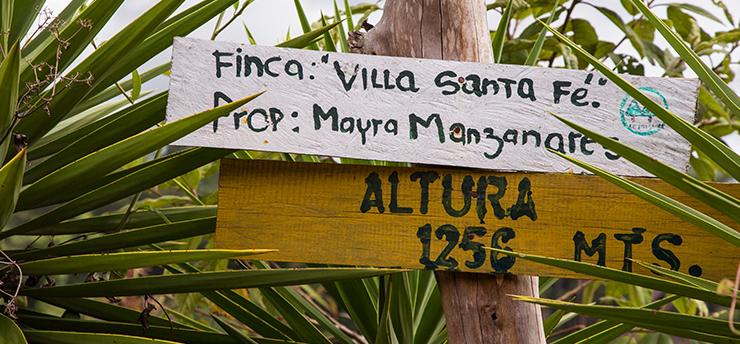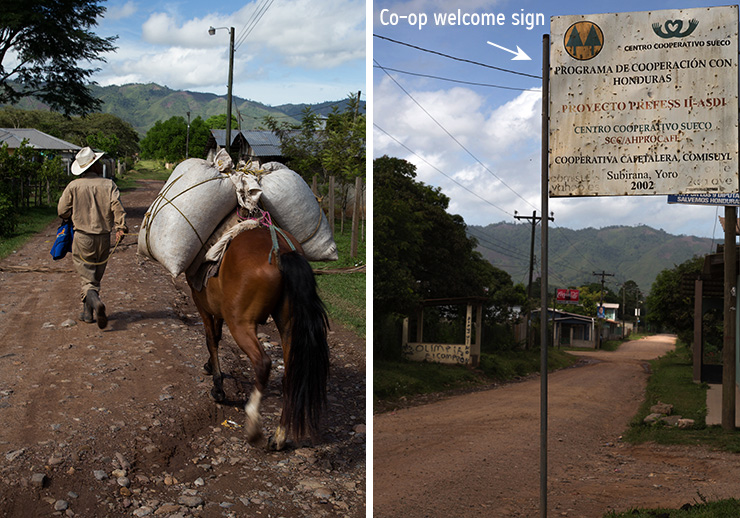
Every day, in harvest season, the co-op receives more “wet beans” — coffee beans now freed from the pulp and skin that enclosed them in the coffee cherry, but still wrapped in their parchment (membrane).
“Whatever the farmers pick and depulp one day comes to us the next,” says Cindy Dubón, president of Cooperativa COMISUYL. “Next-day delivery helps safeguard bean quality.” Cindy is young in years but long in experience, with personal harvest-picking memories plus family coffee-farm memories that go back generations.
So down they come, sacks and sacks of coffee beans, making the trip to the co-op from the members’ farms, high in the Yoro mountains of northern Honduras.

The farms are all within a 50-km radius of their co-op, but it’s still a long trip, on dirt roads that weave their way through difficult mountain terrain. On horseback, the return trip can take up most of the day.


In fact, horseback is not that common — and neither are solo trips. More typically, the co-op arranges for group collection by truck, to bring down the wet beans on behalf of a number of members.
On horseback or by truck, solo or in a group delivery, those beans end up here at the co-op in the valley town of Subirana.
A group delivery does not mean group beans. Each farm’s output is separately recorded, to ensure accurate credit and payment.
“We’re very proud of what we now offer our members,” says Cindy. “Maira Manzanares and a few others founded this co-op in 1999. Look how it’s grown …”
“Many coffee co-ops just take in the beans and then on behalf of their members arrange for processing elsewhere. We do a lot more.”

Cindy smiles, ticks off the list on her fingers. “Intake, like the others, but then we handle all the processing as well — more washing, drying, screening and grading at various stages — also bagging, sales and export. And member education. And jobs.”
Next stage for these beans: 24 hours in the the co-op’s unique drying tower. It’s not just more efficient than conventional coffee bean dryers, it’s the only one in the world to run entirely on renewable energy.
- Keep checking this page: we will be writing more, step by step, about the process that brings Cafe Solar from the mountains of Honduras to your coffee cup.
- Next Week: The Cooperative’s Bean Selection
- And mark your calendar: the 2014-15 harvest will be available this May!

